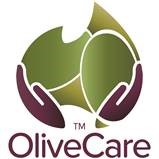23 Jan Biosecurity Plan for the Olive Industry

Biosecurity Best Practice Checklist
- Manage biosecurity risks – prepare an on-farm biosecurity plan
- Plant disease resistant varieties and avoid planting in infected soils.
- Know your high priority biosecurity pests – induct your employees
- Monitor your grove – report anything unusual to the exotic pest hotline
- Implement good grove hygiene – keep it clean, removal or composting of pruning wood, disinfection of pruning tools
- Enforce visitor movement requirements – people and vehicles
- Use grove biosecurity signage
- Provide vehicle and fruit bin wash down facilities – arrive clean / leave clean
Biosecurity plan for the olive industry
Biosecurity planning provides a mechanism for the olive industry, government and other relevant stakeholders to assess current biosecurity practices and future biosecurity needs.
The Biosecurity Plan for the Olive Industry outlines key threats to the industry, risk mitigation plans, identification and categorisation of exotic pests and contingency plans.
On-farm biosecurity best practices play a pivotal role in maintaining Australia’s reputation of producing high quality products. Growers maintaining a pest-free environment can capitalise on this reputation and use it as a trade asset to gain leverage into global and local markets. Additionally, biosecurity practices can act as security against farm quarantine measures.
Proper biosecurity signage; insect, weed and pest surveillance; and on-farm clean-down facilities are three commonly used farm biosecurity measures.
Click on the above links and read on.
High priority exotic pests and diseases of olives
The Biosecurity Plan for the Olive Industry identifies the following high priority exotic pests and diseases of olives in Australia:

Is Xylella a threat to Australian olives?
By Craig Elliott, National Xylella Co-ordinator
Ref: R&D Insights: https://olivebiz.com.au/r-d-insights-june-2019-2-2/ (December edition of OGP)
